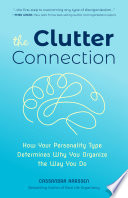

The book introduces the concept of clutter styles, which are unique ways individuals interact with their belongings and space. There are four main clutter styles: the 'Visual,' 'Methodical,' 'Sentimental,' and 'Practical' styles. Understanding your clutter style helps in recognizing the reasons behind your clutter and the emotional attachments you may have to items. This self-awareness is crucial in tackling clutter effectively. The author emphasizes that decluttering is not just about getting rid of things but about understanding why we hold onto them. By identifying your clutter style, you can develop personalized strategies that resonate with your habits and preferences, making the decluttering process more effective and sustainable. This idea encourages readers to approach clutter not as a one-size-fits-all problem but as a personal journey that reflects their unique relationship with their possessions.
Continue readingClutter often carries emotional weight, and the book delves into how our attachments to items can create barriers to decluttering. The author discusses the psychological aspects of clutter, explaining how items can represent memories, relationships, or phases of life. This emotional connection can make it difficult to part with items, even when they no longer serve a purpose. The book provides insights into how to navigate these feelings, suggesting techniques for honoring memories without keeping physical items. For instance, taking photos of sentimental items or creating a memory box can help preserve the essence of those memories while allowing for a more organized space. The focus on emotional connections encourages readers to reflect on their values and priorities, leading to a more mindful approach to what they choose to keep.
Continue readingA significant theme in 'The Clutter Connection' is the importance of establishing sustainable systems for organization. The author argues that decluttering is not a one-time event but an ongoing process that requires maintenance. To ensure that spaces remain organized, readers are encouraged to create systems that fit their lifestyles. This includes decluttering regularly, designing storage solutions that are easy to use, and establishing routines that prevent clutter from accumulating again. The book offers practical tips for creating these systems, such as categorizing items, using labels, and involving family members in the organization process. By creating sustainable systems, individuals can cultivate environments that support their goals and well-being, thus reducing stress and enhancing productivity.
Continue readingMindfulness plays a crucial role in the decluttering process, as discussed in the book. The author highlights the importance of being present and intentional when making decisions about belongings. This mindfulness approach encourages readers to engage with their items consciously, considering how each item contributes to their life. The book suggests practices such as journaling about one's feelings towards certain items or conducting a 'clutter audit' to assess what truly adds value. By fostering mindfulness, individuals can develop a clearer understanding of their needs and desires, which can lead to more informed choices about what to keep and what to let go. This idea also emphasizes the importance of self-compassion during the decluttering journey, recognizing that it is a process that takes time and patience.
Continue readingThe book encourages readers to involve others in their decluttering efforts, whether it's family members, friends, or professional organizers. Collaboration can provide motivation, accountability, and new perspectives on belongings. The author discusses how sharing the decluttering journey can foster deeper connections with loved ones and create a supportive environment for change. This idea also touches on the importance of communication when it comes to shared spaces, emphasizing that everyone involved should be on the same page regarding organization and clutter management. By working together, individuals can not only declutter more effectively but also strengthen relationships and create a sense of community around the process.
Continue readingLife changes, such as moving, starting a new job, or experiencing a significant event, can trigger clutter accumulation. The book discusses how to adapt to these changes by reassessing belongings and priorities. The author provides strategies for navigating transitions, such as conducting a thorough declutter before a move or evaluating items after a major life event. This adaptability is crucial for maintaining an organized space that aligns with one's current lifestyle and goals. The book emphasizes that decluttering is not just about physical items but also about making room for new experiences and opportunities. By being proactive in addressing clutter during life changes, individuals can create environments that support their evolving needs.
Continue readingThe book explores how our physical environment influences our relationship with clutter. The author discusses the importance of creating spaces that are conducive to organization and well-being. Factors such as lighting, layout, and accessibility can significantly impact how we interact with our belongings. The book provides tips for optimizing spaces, such as decluttering high-traffic areas and ensuring that frequently used items are easily accessible. By understanding the connection between environment and clutter, readers can make intentional changes that foster a more organized and harmonious living space. This idea reinforces the notion that decluttering is not solely about the items themselves but also about the context in which they exist.
Continue reading